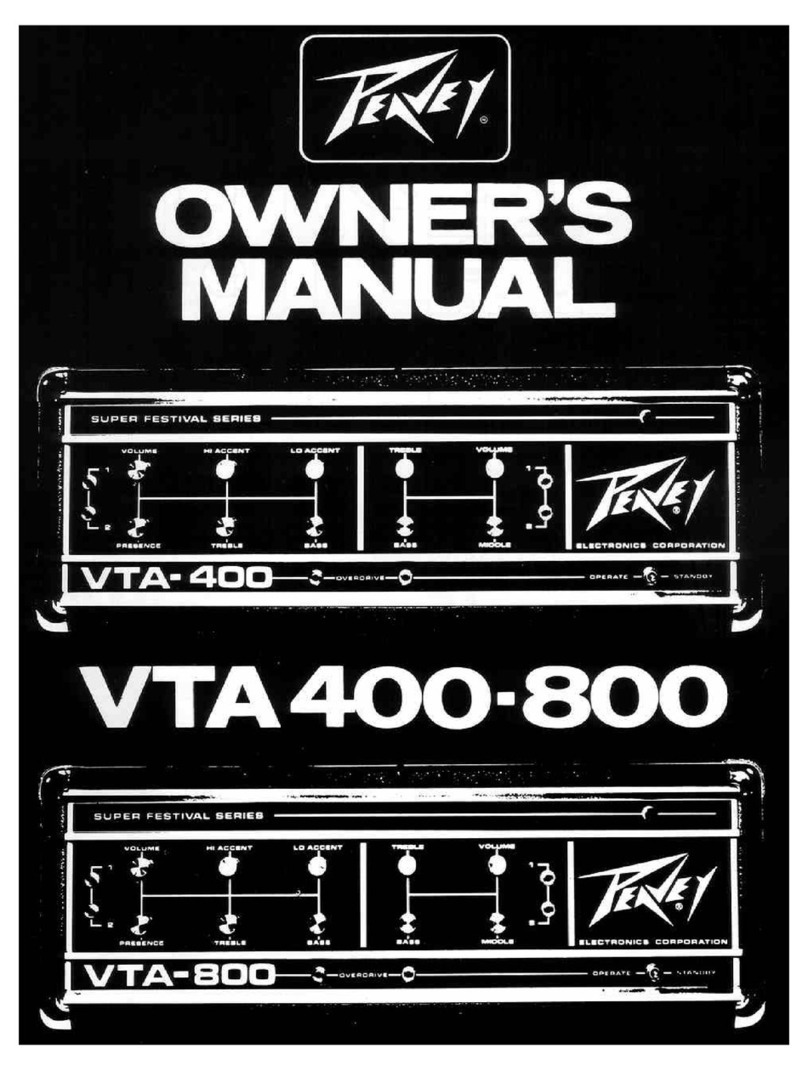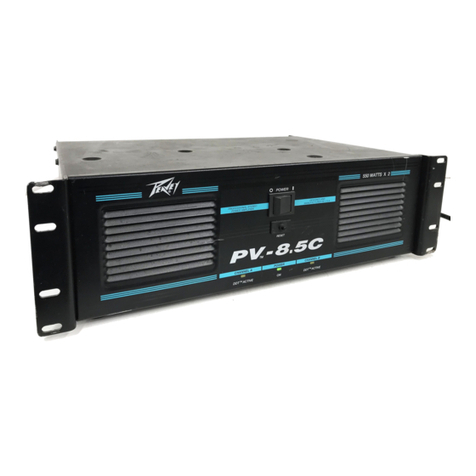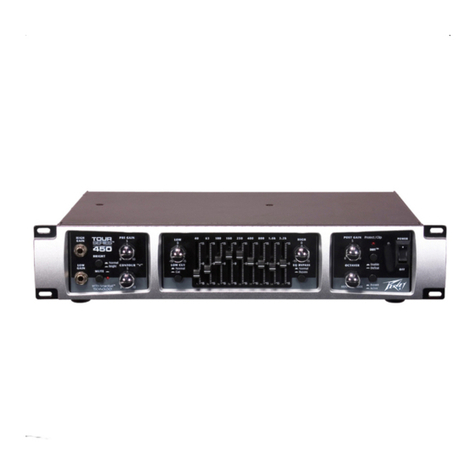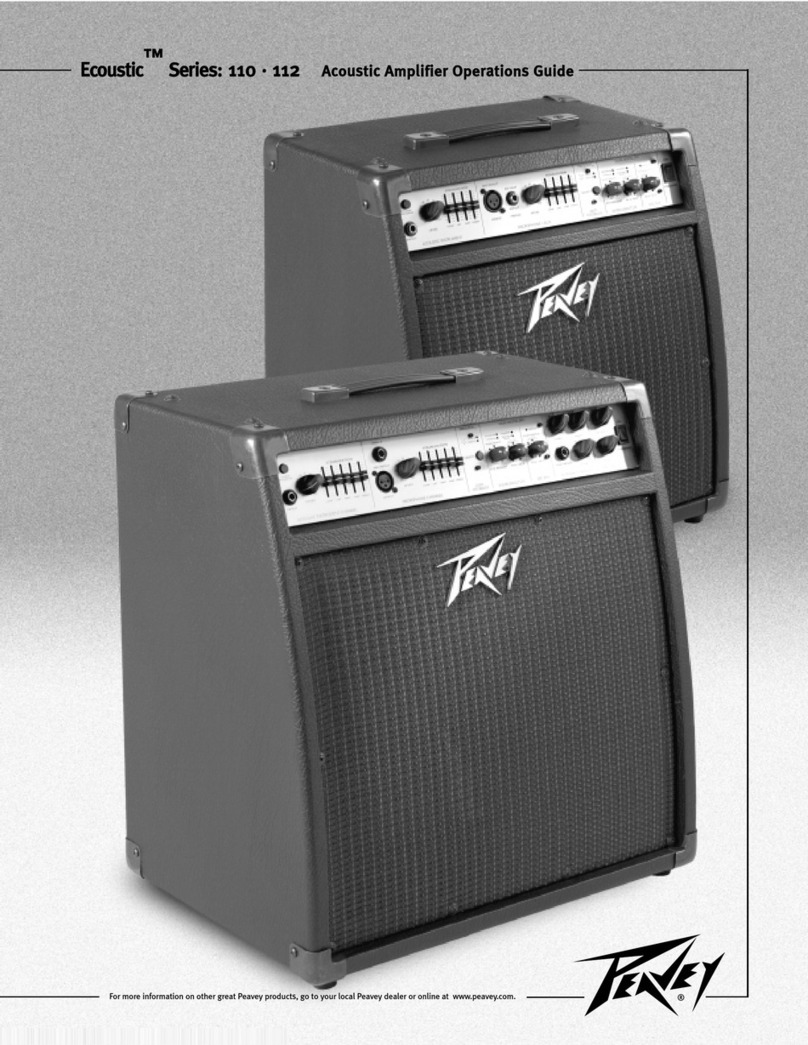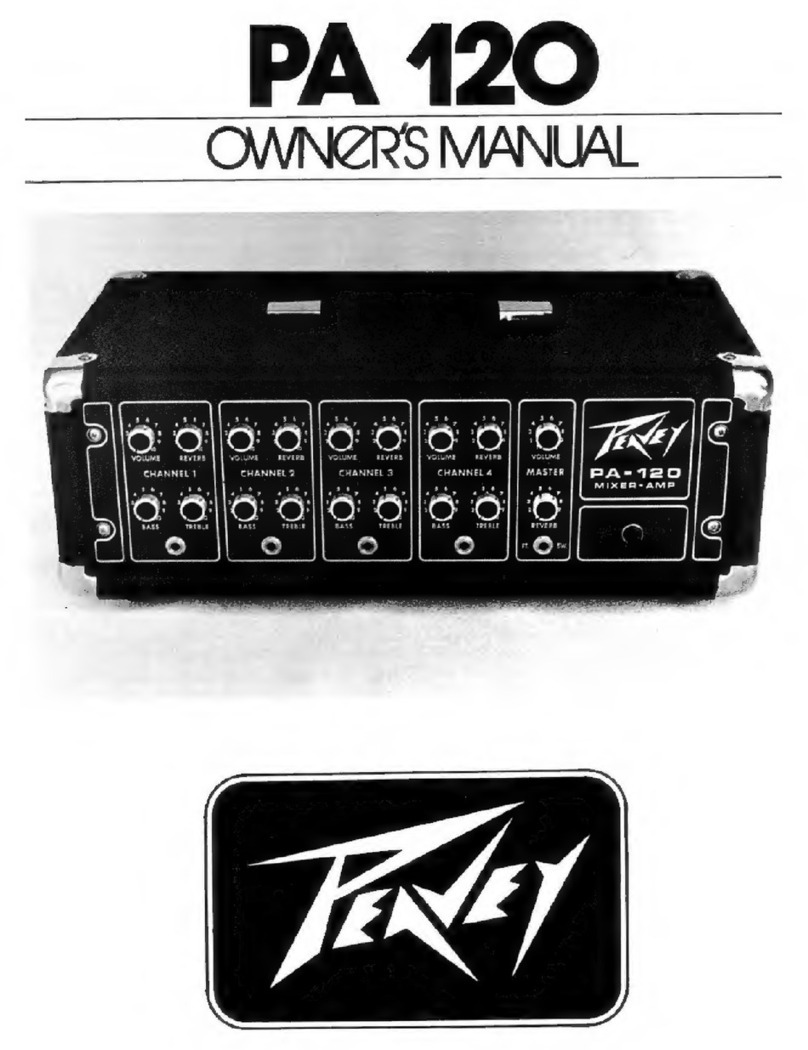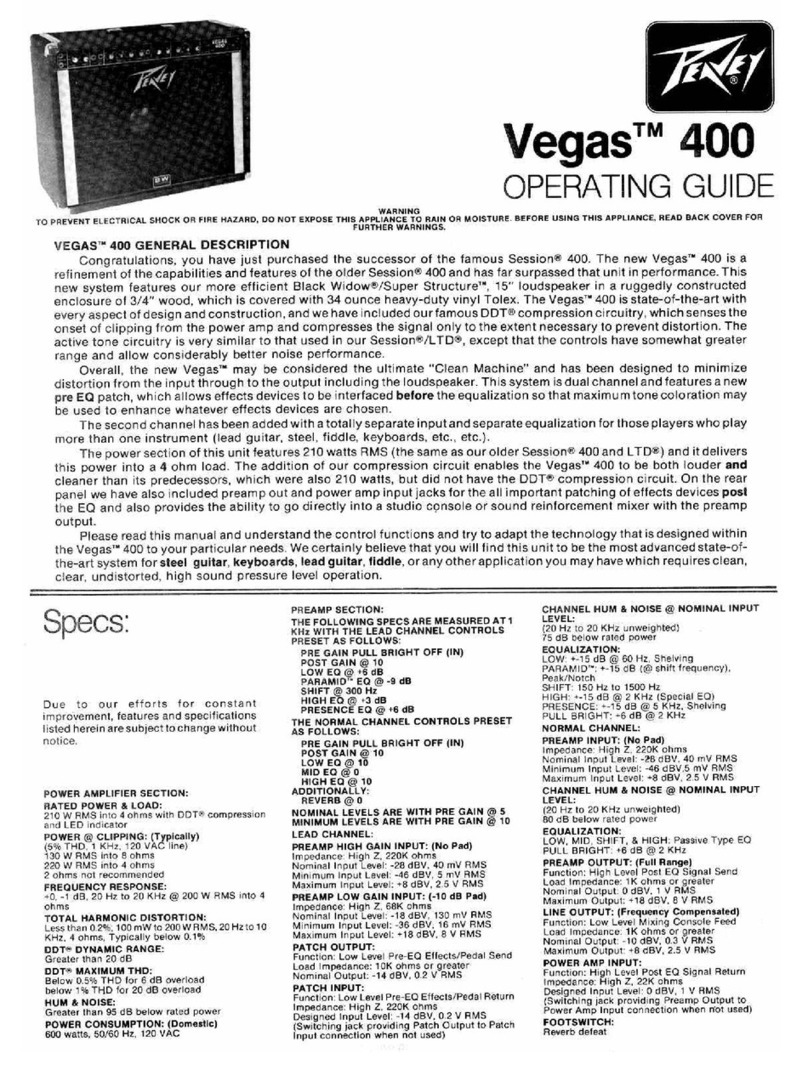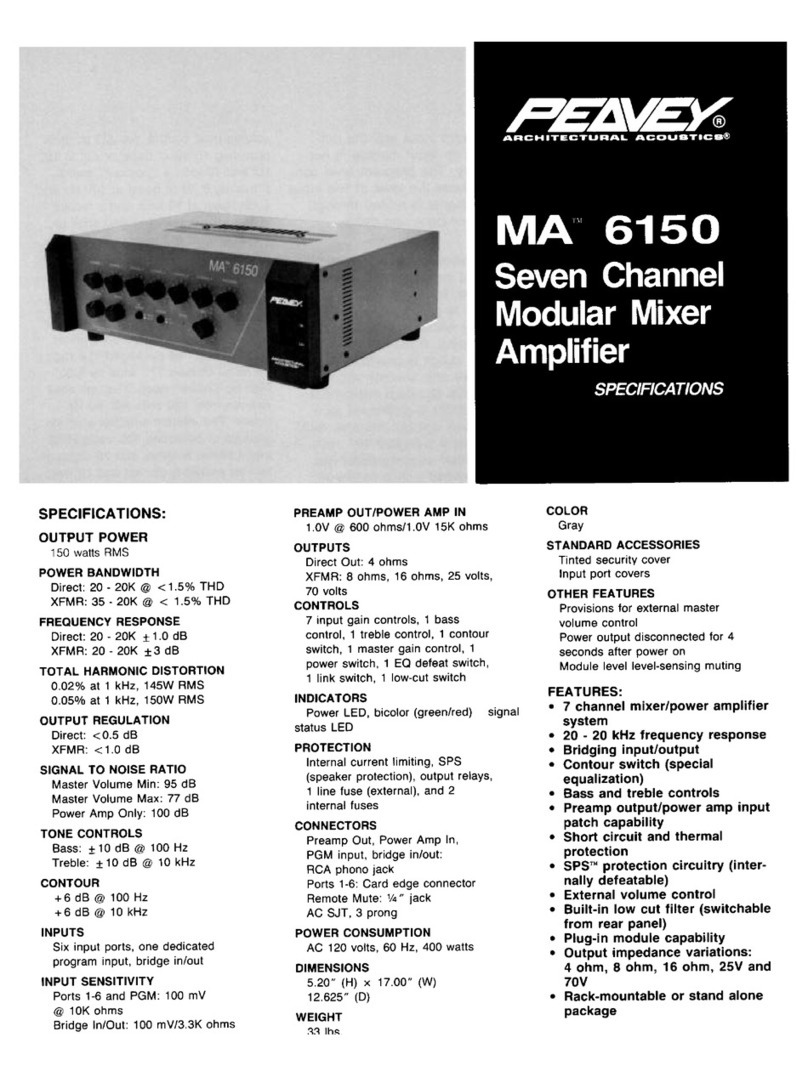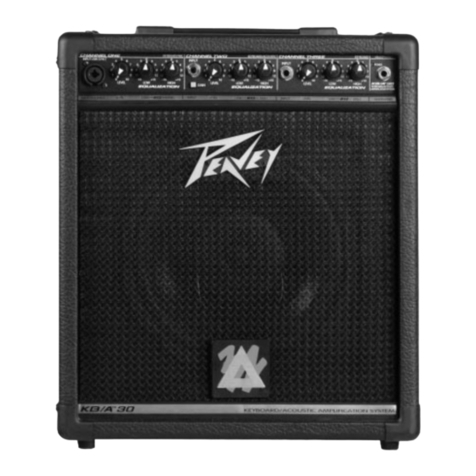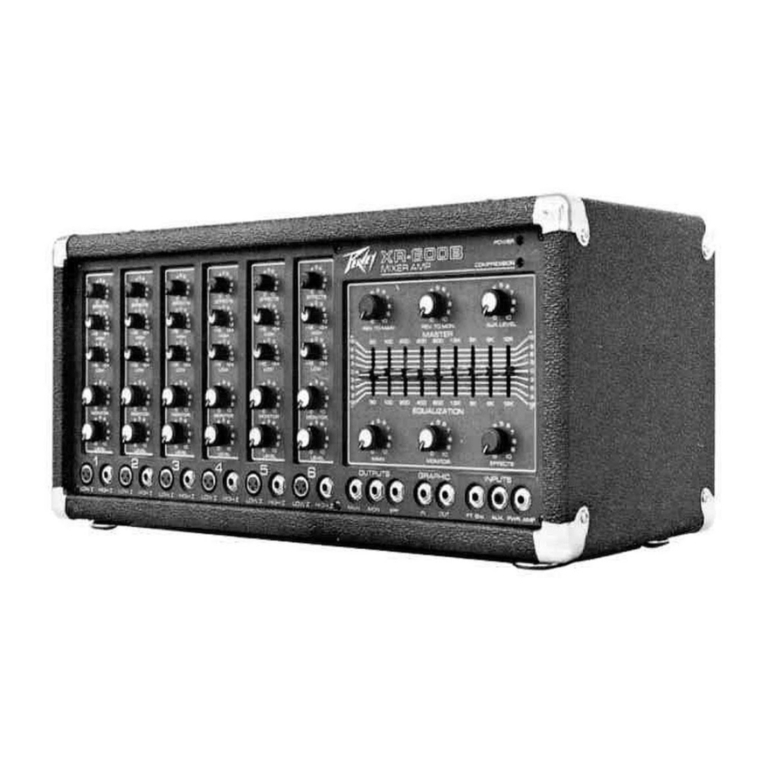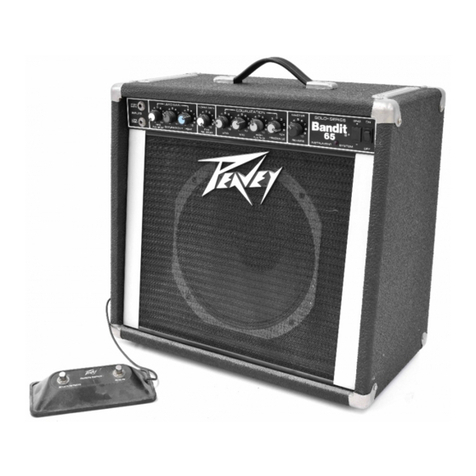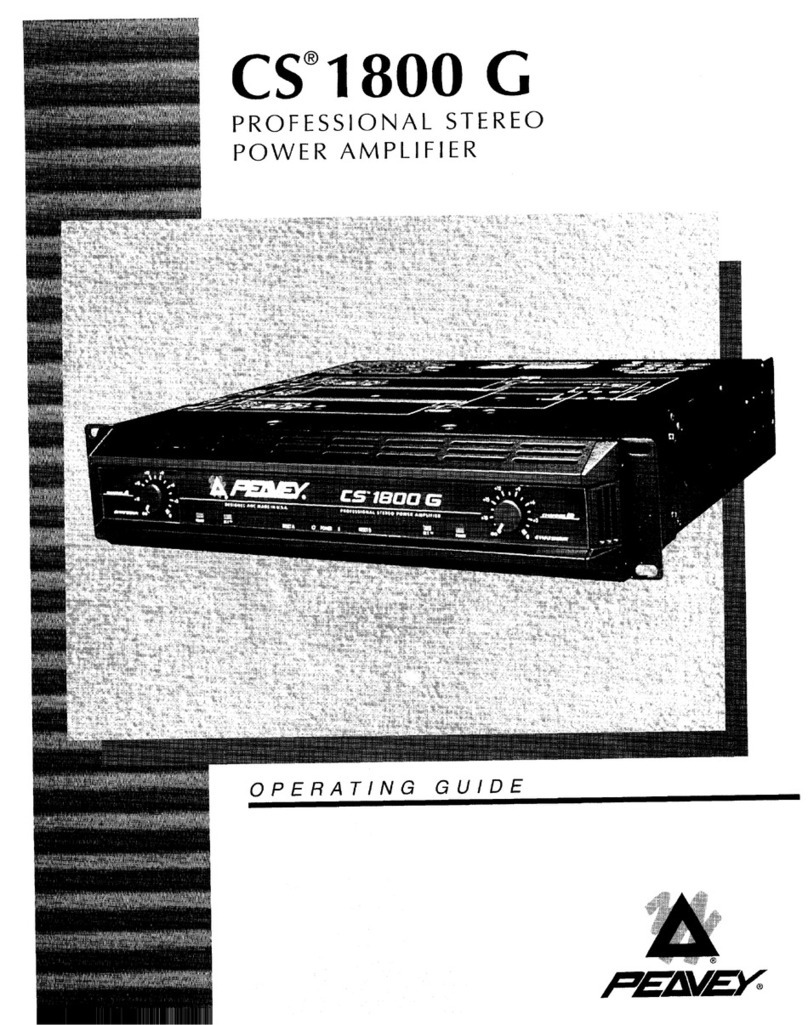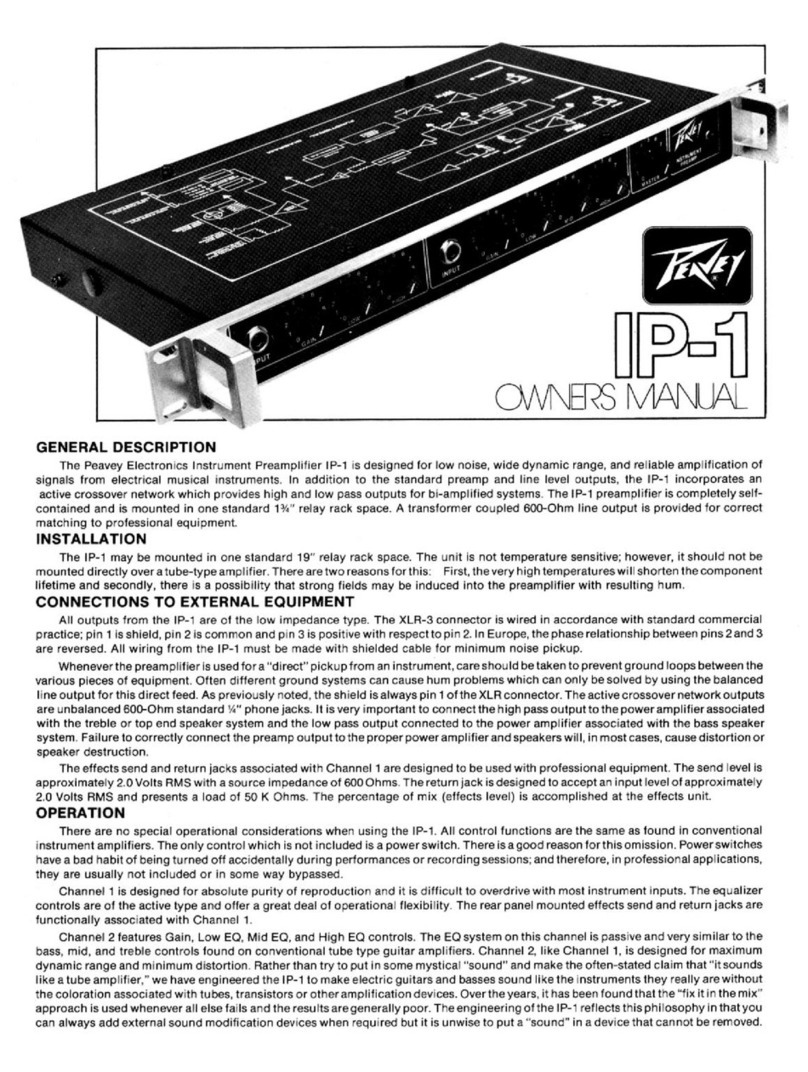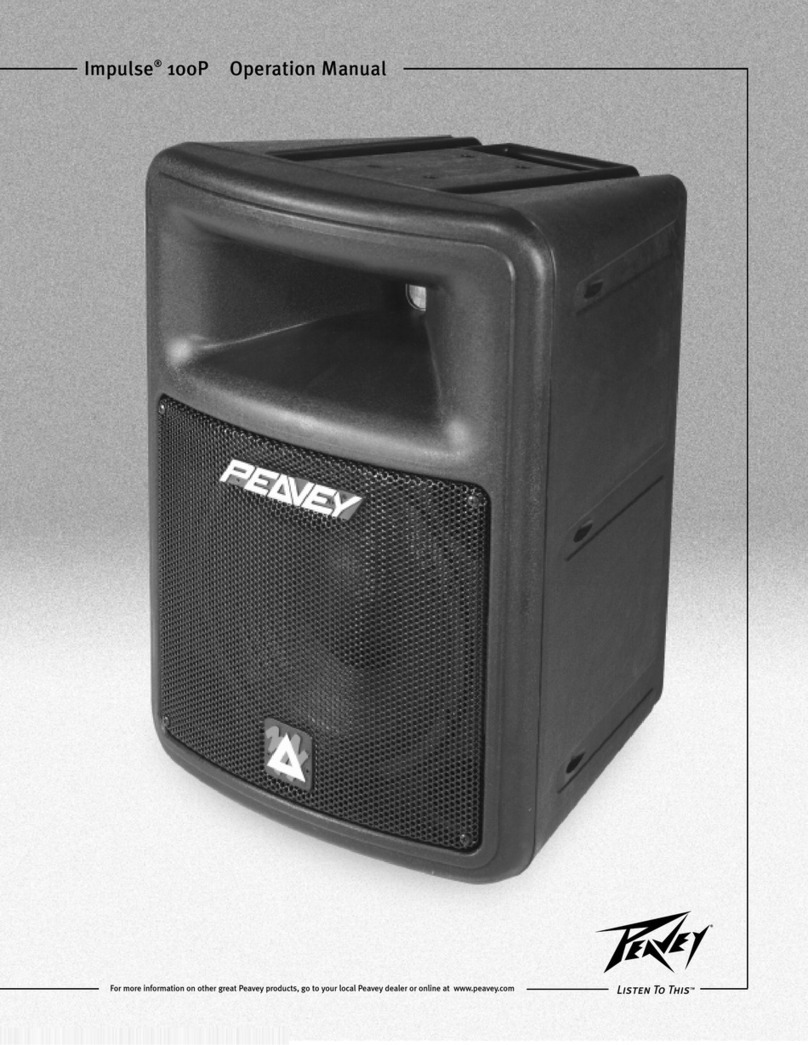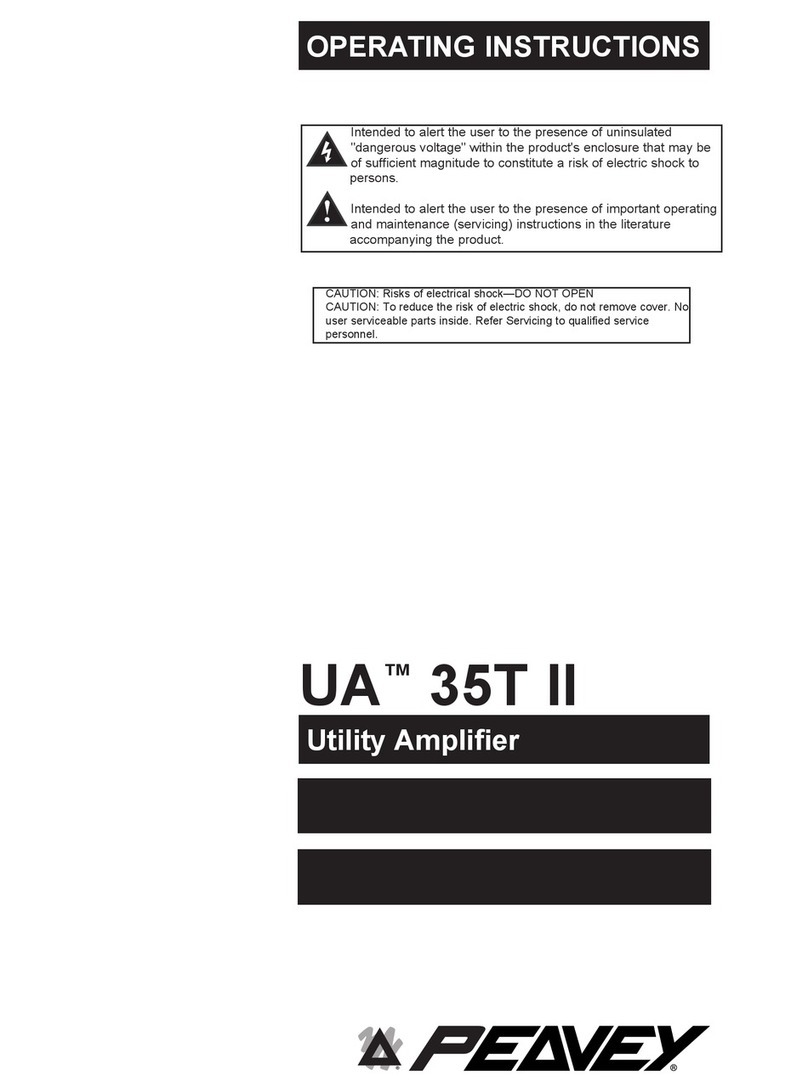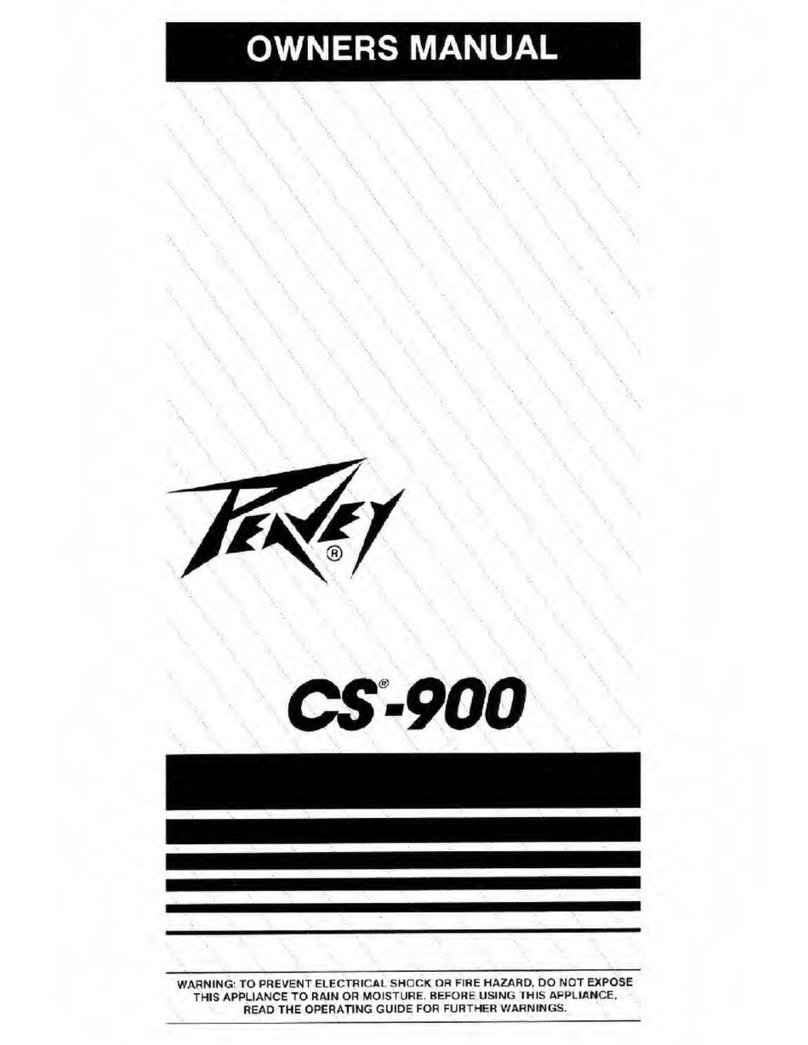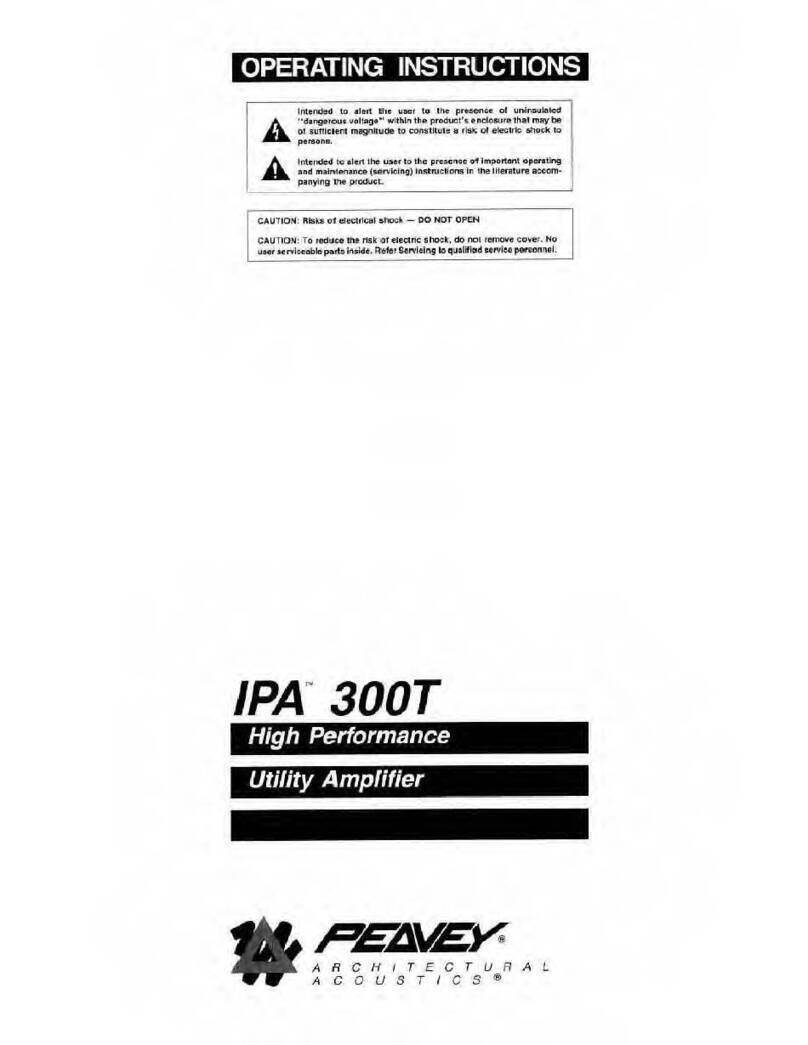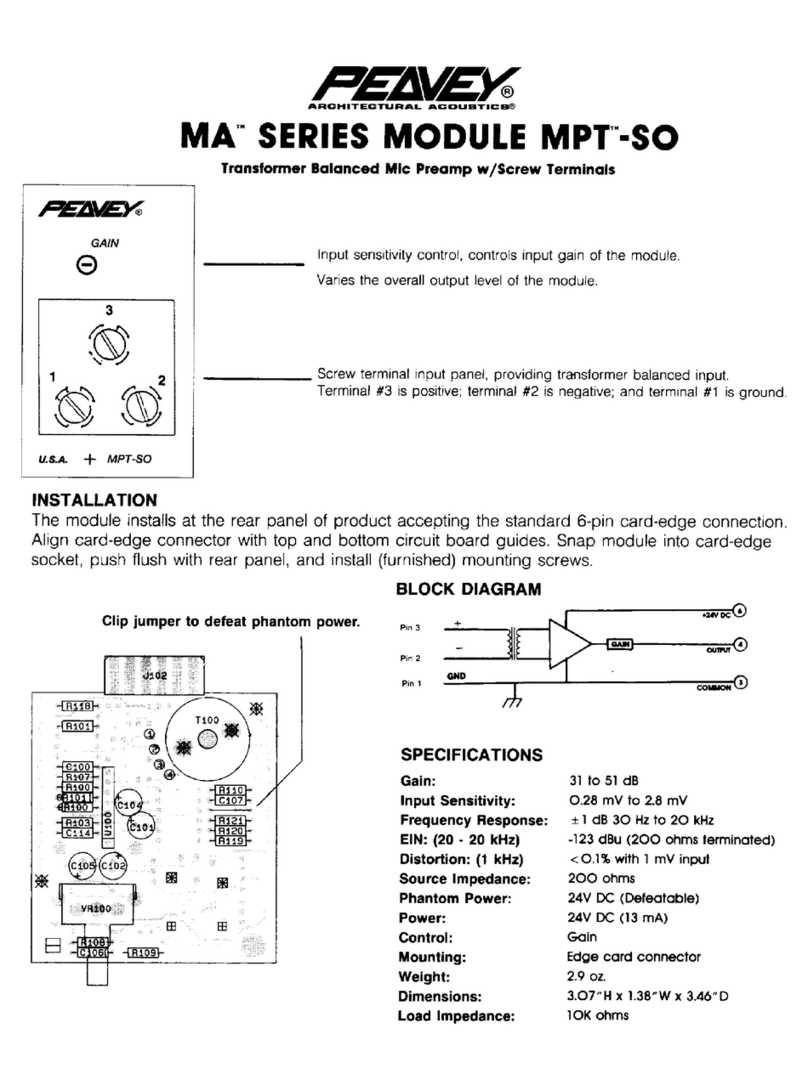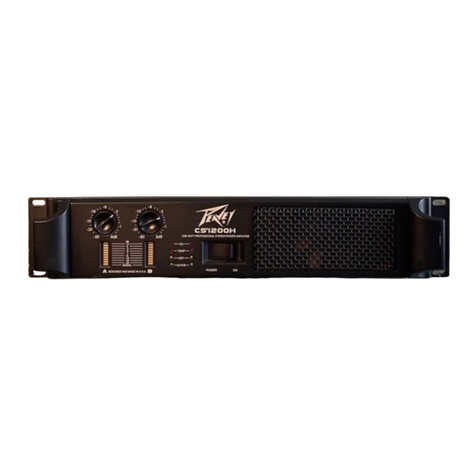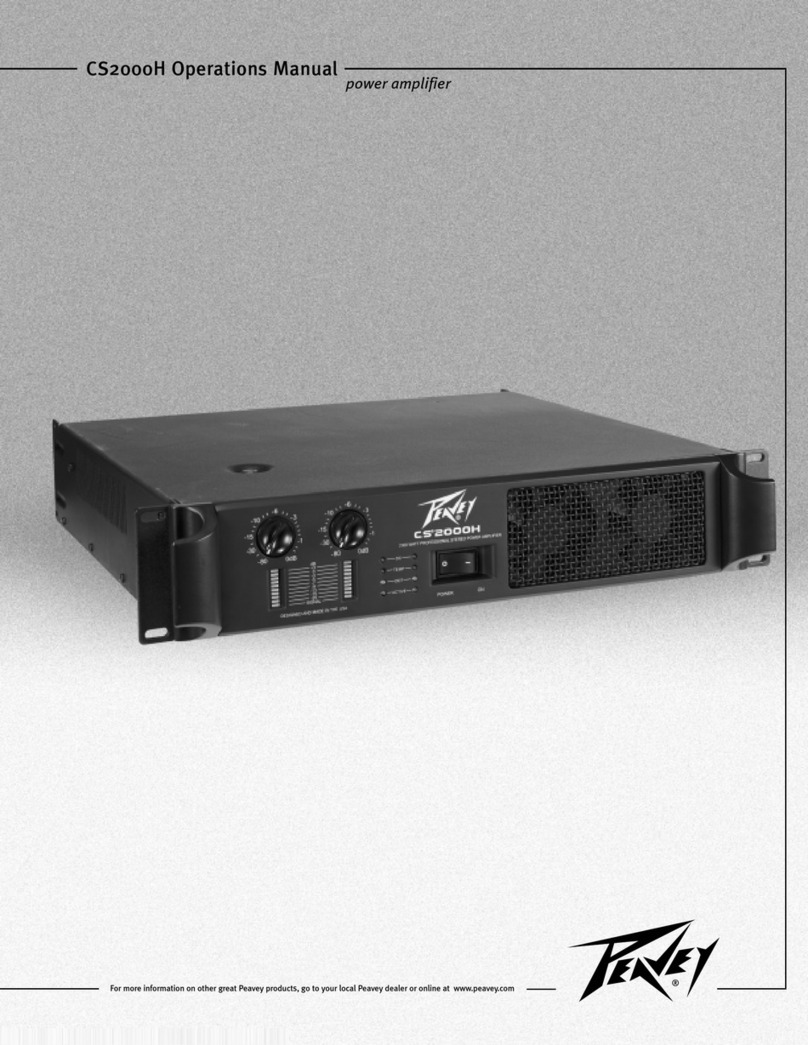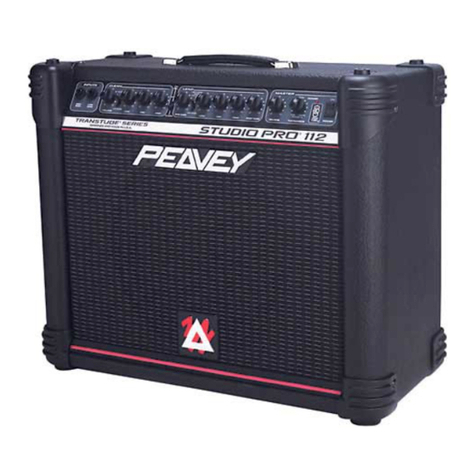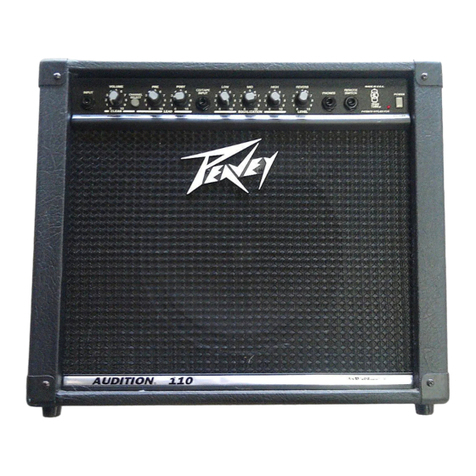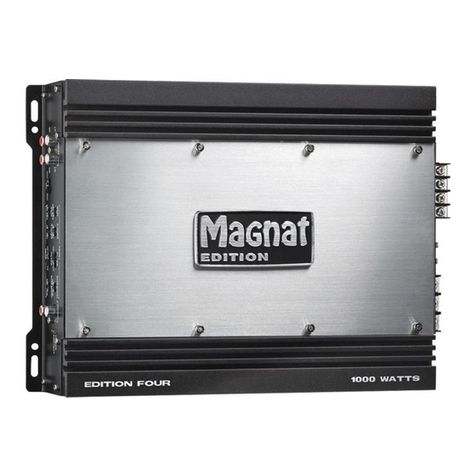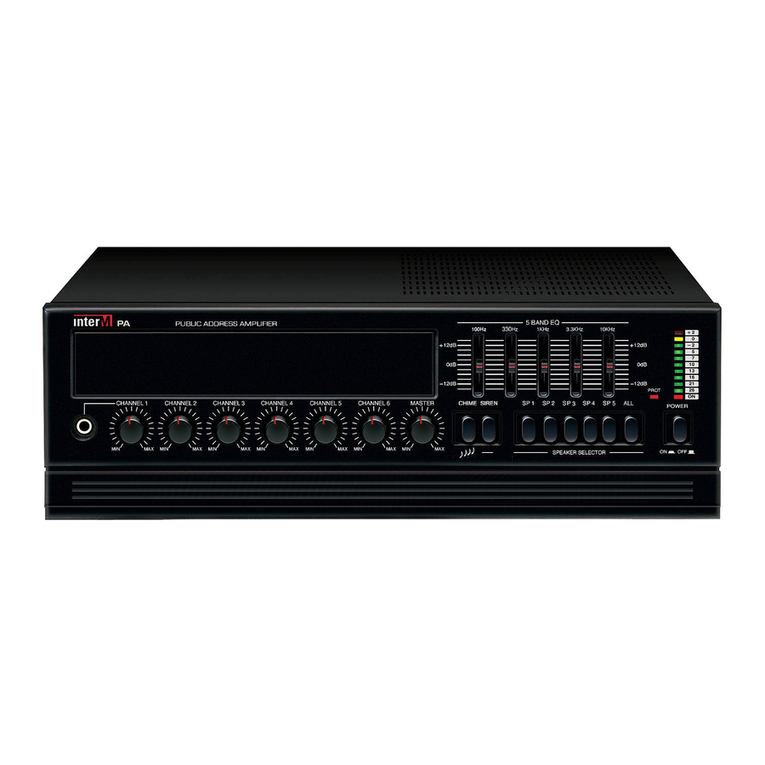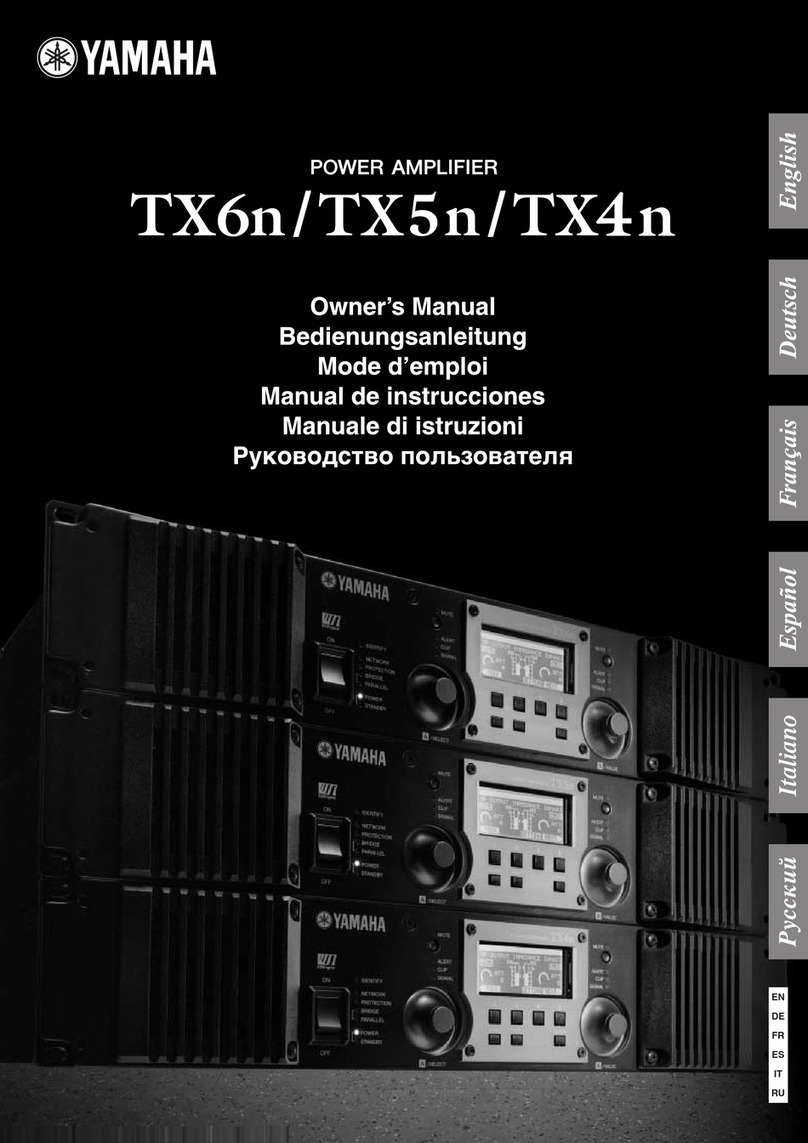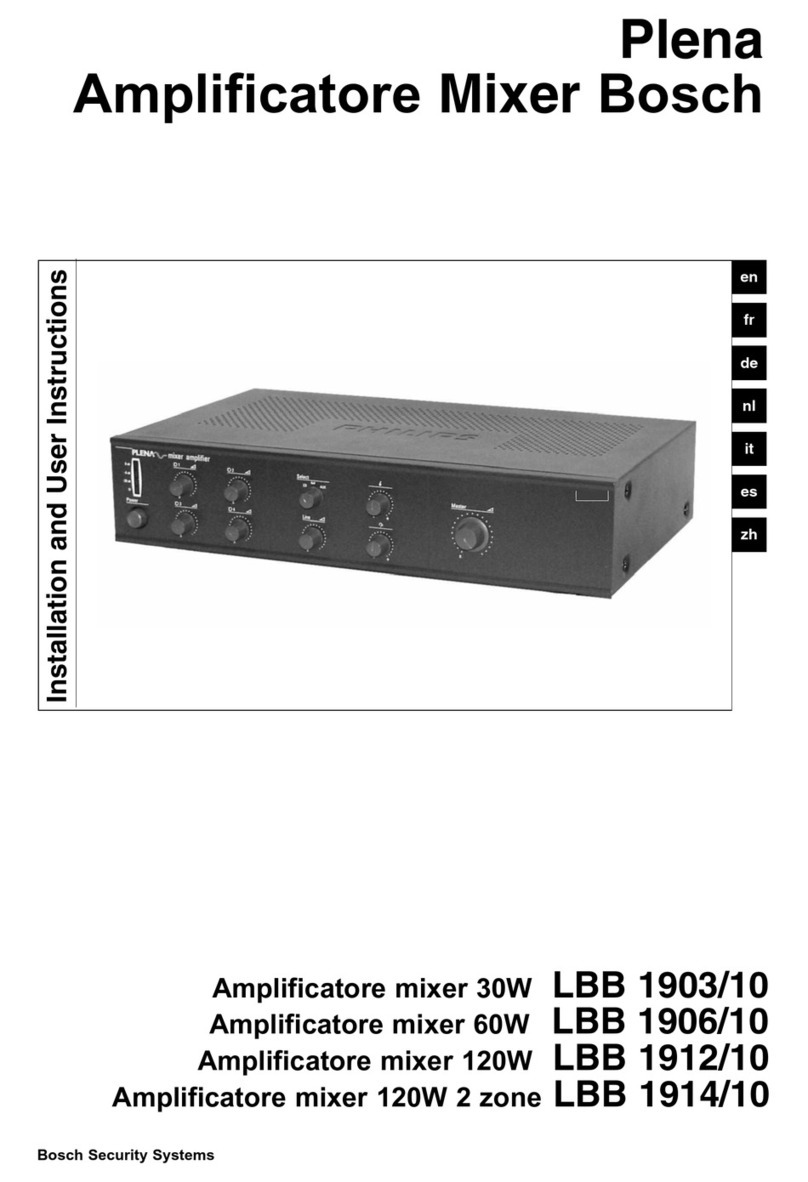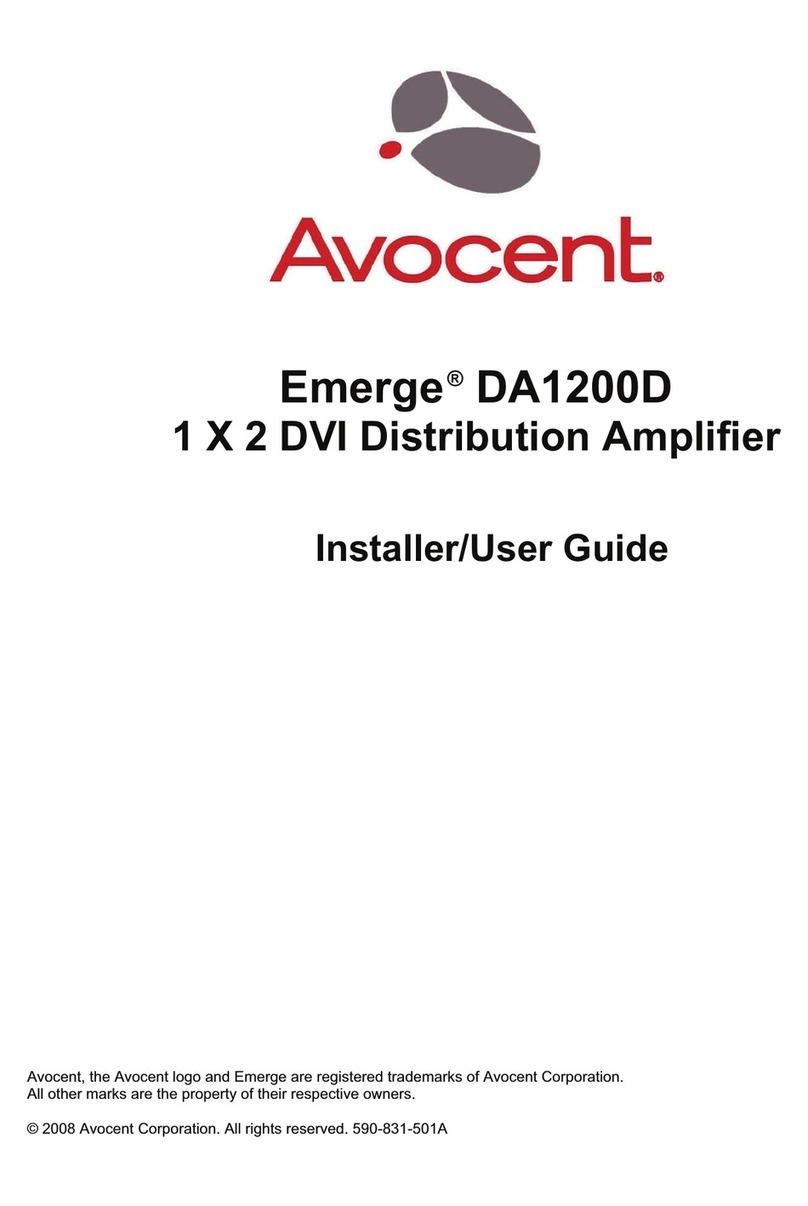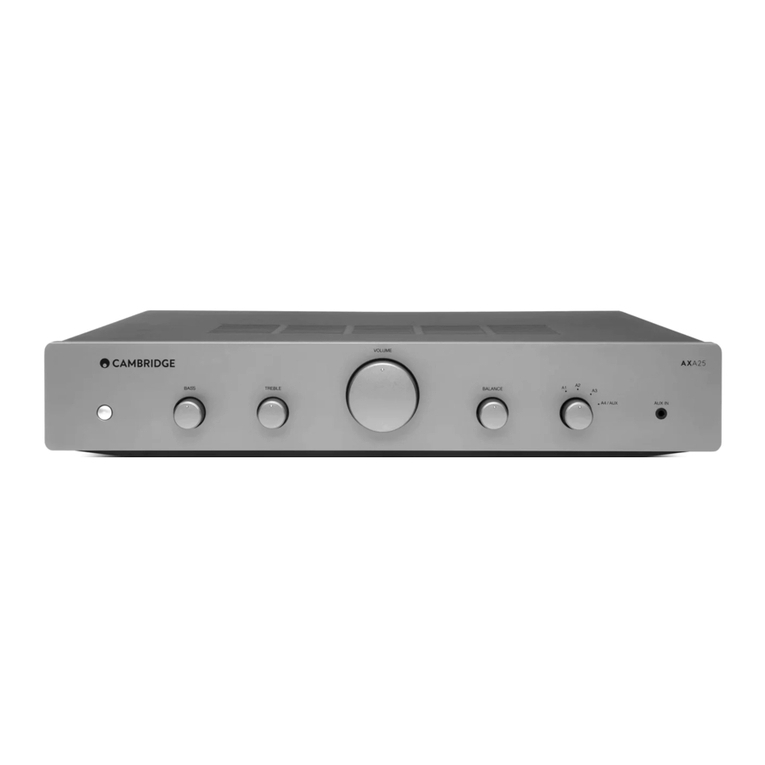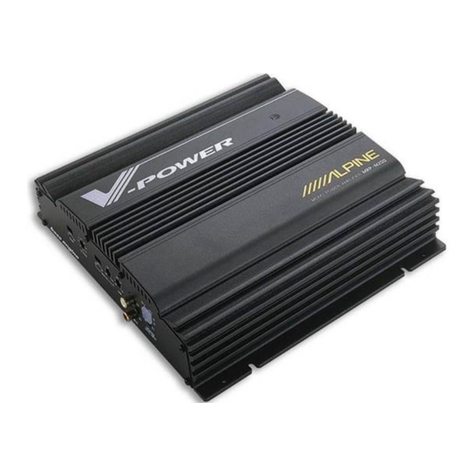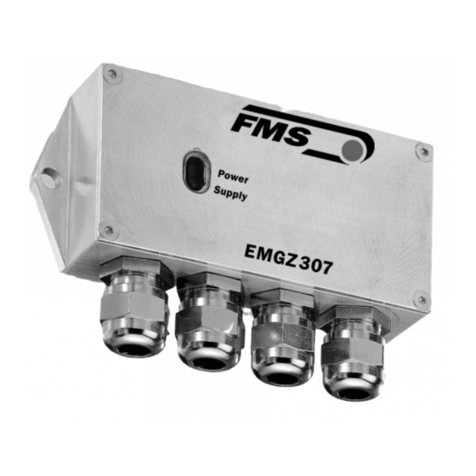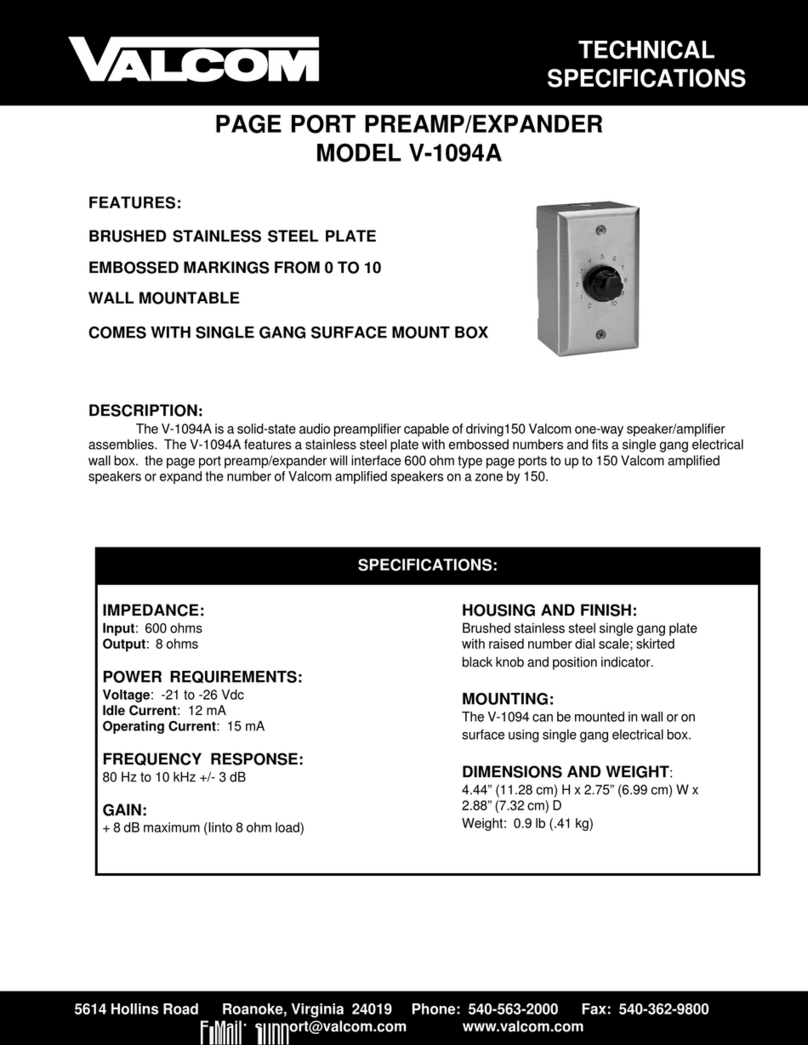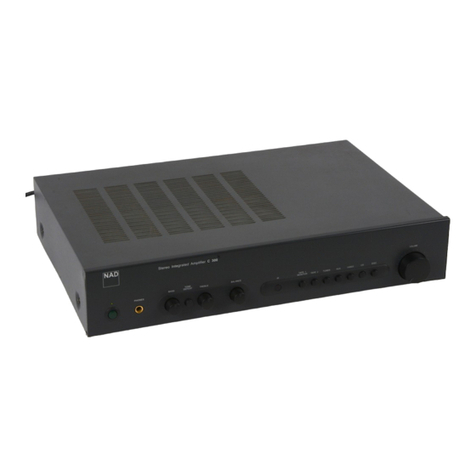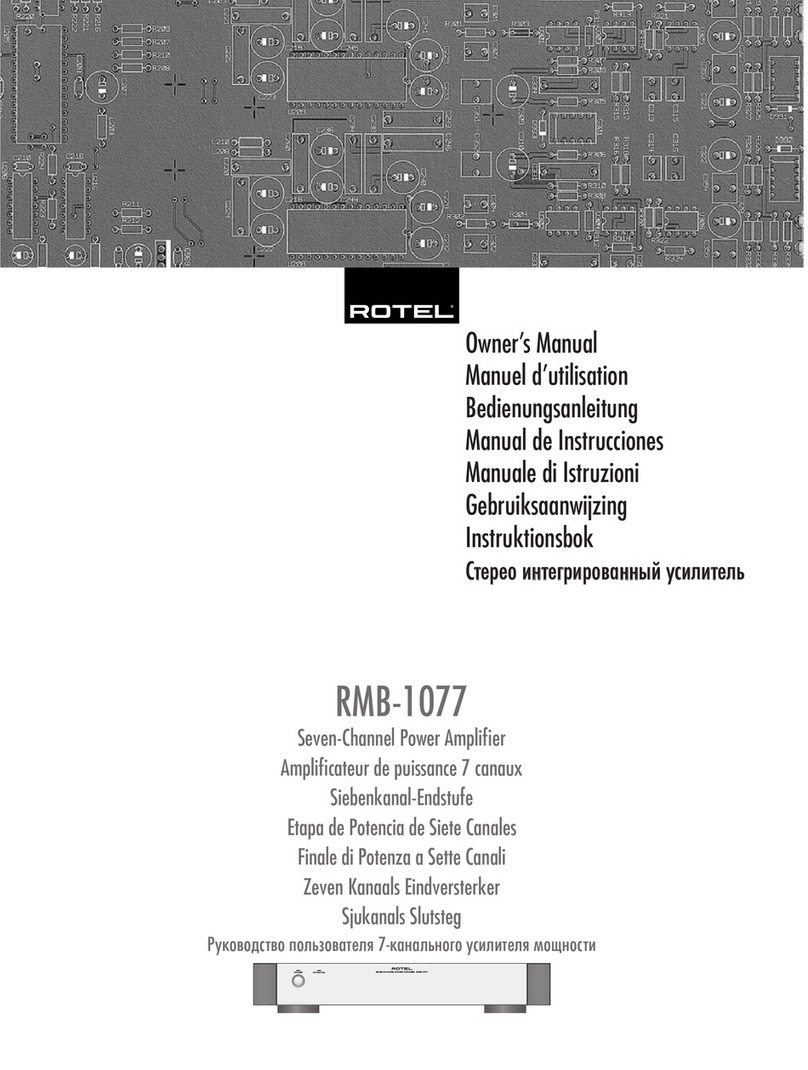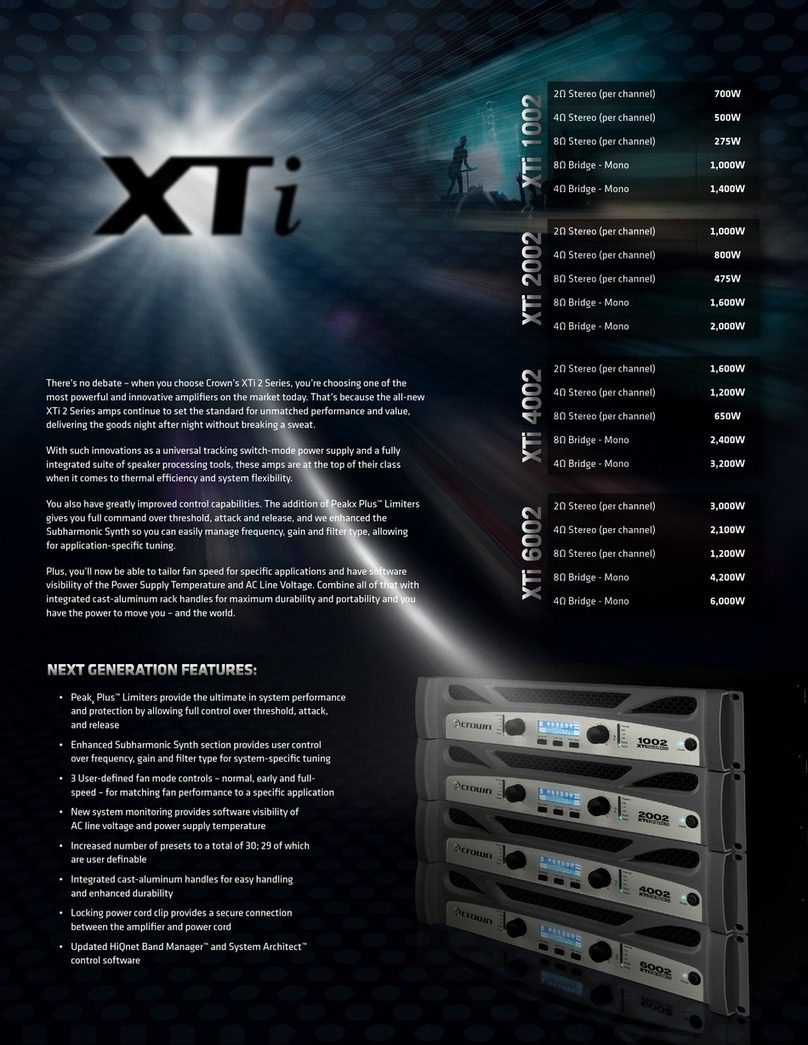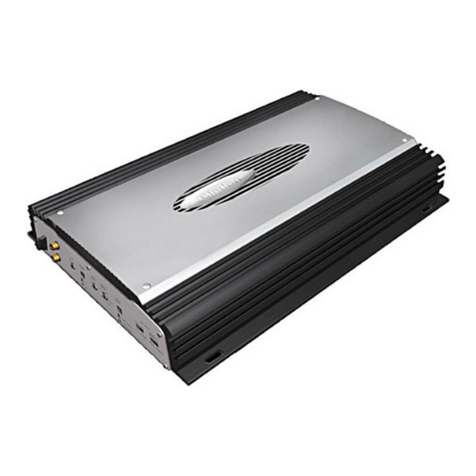The EDI is a different approach to taking
instruments direct into a sound reinforcement or
studio mixing console. This equalized direct system
will solve many problems usually associated with
ttoonnaalliittyywhen instruments are fed directly into large
sound systems. ost “direct” box-type units are
designed to work with the instrument’s signal,
bbeeffoorreethe amplifier or with a line output from the
preamp. The main problem with this concept is that
the tone coloration, which is generated by the
power amp/speaker system, is totally bypassed,
and the “direct” hook-up yields an electronically
“dry” tonality.
We have designed the EDI with a different concept
to help the sound engineer/musician cope with
these problems. The EDI works at the power amp
output stage just before the speaker, and has been
equalized to closely duplicate an average tonal
response of the most respected guitar-type
loudspeaker currently available today. Duplicating
an average tonality of several speakers seems like
quite a task from the customer’s viewpoint, but it
actually wasn’t very difficult, because most guitar-
type speakers exhibit frequency response curves
that are very similar.
The EDI takes this similarity into consideration and
allows the mix engineer to more closely duplicate
the guitarist’s tonality without drastic equalization
at the mixer. In fact, during the test period of pre-
production with the equalized direct system (EDI),
we found that with the EDI the overall sound is
closer to what the audience is receiving from an
amplifier on stage as opposed to miking the amp in
the conventional manner.
Concerts today are often at such extreme sound
pressure levels that amplifiers (and all instruments,
for that matter,) must be close-miked to eliminate
bleed-over problems. Close-miking techniques are
unfair to the instruments because the “near field”
response yields high distortion and doesn’t give the
true “cross-section” of tonality that a person would
receive 30 feet from the amp/speaker. It is also
obvious to most sound engineers/musicians that
taking instrument amps direct drastically reduces
“bleed-over” problems because less “live” mics are
in use.
The EDI also includes an adjustment for timbre
(harmonic balance), which helps even further to
closely duplicate the tonality produced
approximately 30 feet in front of the amplifier. This
system has a 600 Ohm transformer bbaallaanncceedd
output which is designed for long, “snake” cable
runs and the input and output grounds have been
floated. (See path diagram.)
SSPPEECCIIFFIICCAATTIIOONNSS::
IInnppuutt sseennssiittiivviittyy::
35 Volts R S
IInnsseerrttiioonn lloossss::
29 dB
DDrraaiinn oonn ssppeeaakkeerr ssiiggnnaall::
Less than 1/2 Watts at 30 Volts R S
GGrroouunndd ssiittuuaattiioonn::
Input and output ground isolated
600 Ohm transformed balanced output 1/4" phone
jack speaker/amp connection
DDiimmeennssiioonnss ((WW xx HH xx DD))::
3.0" x 1.5" x 4.4"
(7.5 cm x 4 cm x 11 cm)
WWeeiigghhtt:
0.45 lbs. (0.2 kg)
SSPPEECCIIFFIICCAATTIIOONNSS EEDDII™™
Features and specifications subject to change without notice.
Peavey Electronics Corporation • 711 A Street • eridian • S • 39301 (601) 483-5365 • FAX (601) 486-1278 • www.peavey.com
©2003 Printed in the U.S.A. 9/03

